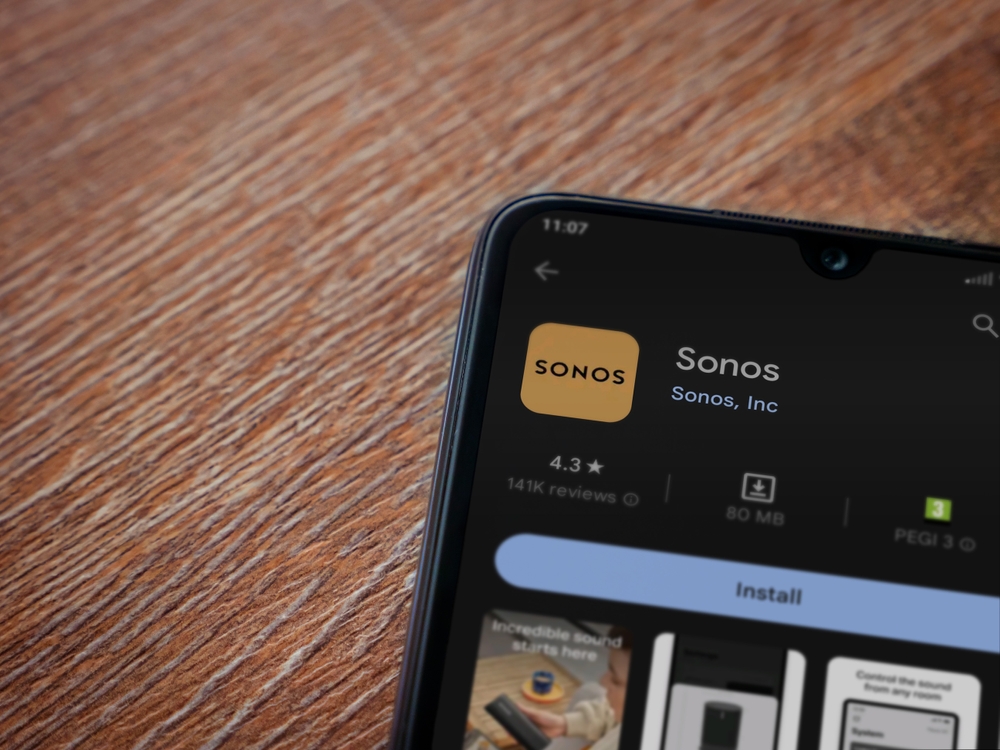Thousands of Sonos users claim they woke up to broken speaker systems after a May 2024 app update that transformed their high-end audio equipment into "expensive paperweights.”
The redesigned app promised to deliver a "faster, better, and smoother experience," but instead, it allegedly stripped away core features and left many unable to control their speakers at all.
The allegedly defective software update has triggered multiple class action lawsuits in 2025, with attorneys representing frustrated consumers who invested hundreds or thousands of dollars in Sonos products.
Class plaintiffs also say they have evidence showing Sonos executives knew about the app's problems but pushed it out anyway.
Sonos May 2024 App Redesign Controversy
The Sonos app problems unfolded quickly, leaving customers scrambling to understand why their reliable speaker systems suddenly stopped working correctly.
The trouble allegedly began on May 7, 2024, when Sonos released its redesigned app version 80.00 to iOS and Android users worldwide.
Within hours, the company's community forums contained complaints about missing features and broken functionality.
Sonos CEO Patrick Spence issued a public apology in July 2024, admitting that "too many" customers experienced "significant problems" with the new app.
By early 2025, attorneys filed multiple class action lawsuits against the company, including the May Bornemann et al. case and the June Raymond Goodrow lawsuit.
Court filings claim Sonos executives rushed the app redesign to support their new Ace headphones launch. The company had previously promised investors a "blockbuster product" that would expand into new markets.
Internal testing reportedly identified numerous bugs before release, but management classified many issues as "non-essential" and decided to fix them later.
Sonos employees later testified that they had raised concerns that the company prioritized meeting product deadlines over ensuring existing customers could use their devices.
CEO Patrick Spence later admitted in an earnings call that his "push for speed backfired," acknowledging the company released software it knew had problems.
Major Sonos App Update Problems
The software update allegedly left customers unable to use basic features they'd relied on for years.
Users say the following gaps in the redesigned app impaired functionality:
- Alarm functions completely disappeared due to what Sonos later called a "data corruption error."
- Sleep timer features vanished without warning.
- Playlist editing became impossible for many users.
- Local music library search stopped working entirely.
- Accessibility features for visually impaired users disappeared, leaving blind customers unable to control their systems.
- The ability to search across multiple music services simultaneously - a core Sonos feature - broke completely.
One blind plaintiff with 15 Sonos devices also reported the new app was "not accessible at all," despite claimed company assurances about maintaining accessibility features for elderly and disabled people.
Beyond missing features, users claim they faced crippling performance issues:
- App crashes occurred constantly, stopping music mid-song.
- Speakers randomly disappeared from the app, becoming invisible and uncontrollable.
- Volume controls suffered severe lag or stopped responding entirely.
- Grouped speakers fell out of sync, playing the same music at slightly different times.
- Connections between the app and speakers dropped repeatedly.
- Audio cut out unexpectedly, sometimes blasting at full volume without warning.
- Forced firmware updates prevented users from reverting to the working previous version.
The problems proved so severe that many users reported their entire Sonos systems became "nearly useless" overnight.

How Sonos Allegedly Violated Consumer Protection Laws
Multiple legal theories asserted in the lawsuits argue how Sonos's conduct violated both federal and state consumer protection statutes.
Goodrow attorneys argue Sonos violated the Computer Fraud and Abuse Act (CFAA) by knowingly transmitting harmful code to protected computers.
The app update is claimed to qualify as unauthorized damage because:
- Users never consented to functionality removal.
- Sonos concealed the update's harmful effects.
- The transmission intentionally impaired device performance.
The CFAA provides monetary damages and injunctive relief, meaning courts could order Sonos to fix the problems or allow downgrades.
The lawsuits further cite numerous alleged state law violations:
- California's False Advertising Law - misrepresenting the update as an improvement.
- Unfair Competition Law (UCL) - deceptive business practices.
- Computer Data Access and Fraud Act - unauthorized system disruption.
- Multiple state deceptive trade practices acts across New York, Florida, Texas, and other states.
Each state's consumer protection laws provide different remedies, potentially including statutory damages, treble damages, and attorneys' fees.
New Class Action Lawsuits Against Sonos
Two major lawsuits now seek remedies for millions of affected Sonos customers across the United States.
Filed in the Central District of California, this comprehensive lawsuit represents 14 named plaintiffs from multiple states who experienced alleged system failures after installing the app update.
Robert Bornemann, who owns multiple Sonos speakers and amplifiers, states his devices became "nearly useless" with constant connection failures and random power cycling.
Borneman's legal team seeks class certification for all US Sonos device owners who downloaded the redesigned app.
This case presents a comprehensive 74-page complaint that meticulously documents how Sonos executives allegedly knew about the defective software but released it anyway.
Class plaintiff Goodrow claims the company violated federal computer fraud laws by knowingly transmitting code that would damage users' devices.
Goodrow also says that Sonos provided no warning about functionality losses and actively prevented users from downgrading after problems emerged, constituting intentional harm to consumers.
What the Sonos Settlement Could Include
Sonos's defective app update may significantly impact the company financially.
Recent court filings estimate that actual and special damages may exceed $5 million within the first year alone.
These calculations considered multiple factors:
- Individual users report willingness to pay $100-$1,500 to restore functionality.
- Replacement costs for equivalent speaker systems range from $480-$699 per device.
- Many households own multiple Sonos products, multiplying damages.
- State laws provide statutory damages from $50 to $10,000 per violation.
With millions of users supposedly affected and multiple alleged violations per user, total damages could reach billions of dollars.
Class action attorneys are asking the courts to certify all Sonos speaker owners in the US who downloaded the app update from May 2024.
The proposed membership would include all purchasers, owners, users, or lessees of Sonos devices whose app ran any version of the app redesign.
Specific state subclasses may also receive enhanced damages under stronger consumer protection laws.
Protection Against Corporate Software Negligence
This case shows how technology companies can destroy the value of physical products through forced updates that remove paid-for features.
When customers invest thousands in premium tech, they may reasonably expect those devices to maintain core functionality.
Today's consumers need protection from companies prioritizing new product launches over maintaining existing systems. The upcoming Sonos lawsuits may help define those protections and set new precedents for years to come.
Frequently Asked Questions (FAQ)
On May 7, 2024, Sonos released a redesigned app (version 80.00) that removed core features and caused widespread functionality problems. Users lost the ability to set alarms, edit playlists, search local music libraries, and control their speakers reliably. Despite internal testing revealing significant bugs, executives supposedly rushed the update to market to support the company's new Ace headphones launch.
Any US purchaser, owner, user, or lessee of Sonos devices who downloaded the app redesign since May 2024 potentially qualifies. The proposed class includes anyone whose Sonos app ran version 80.00 or later. Most users will be automatically included if courts certify the class, unless they specifically choose to opt out.
The lawsuits allege Sonos violated the federal Computer Fraud and Abuse Act by knowingly transmitting harmful code that damaged users' devices without consent. Additional claims include violations of state consumer protection laws, false advertising statutes, unfair competition laws, and computer data access fraud acts across multiple states, including California, New York, Florida, and Texas.
No! Users cannot downgrade to previous versions. Sonos forced firmware updates that made older app versions incompatible, and CEO Patrick Spence later admitted the company tested re-releasing the old S2 app but found it would "make the problems worse, not better" due to backend system changes. This effectively trapped users with the defective redesign.



Add Comment